Batteries
FuocoSeries
Revolutionize your energy storage experience with FUOCO's integrated inverter and battery system. The perfect solution to incompatibility issues.
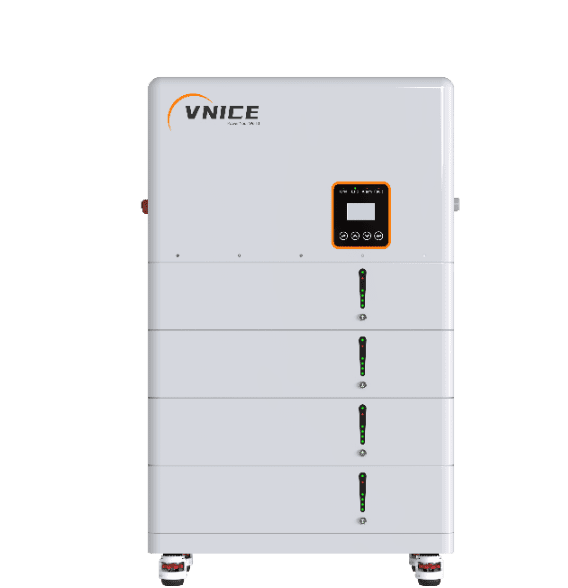
Fuoco All-in-one Residential Energy System
Fuoco energy Storage System support sell the electricity to the grid.
It can save money while reducing carbon emissions.
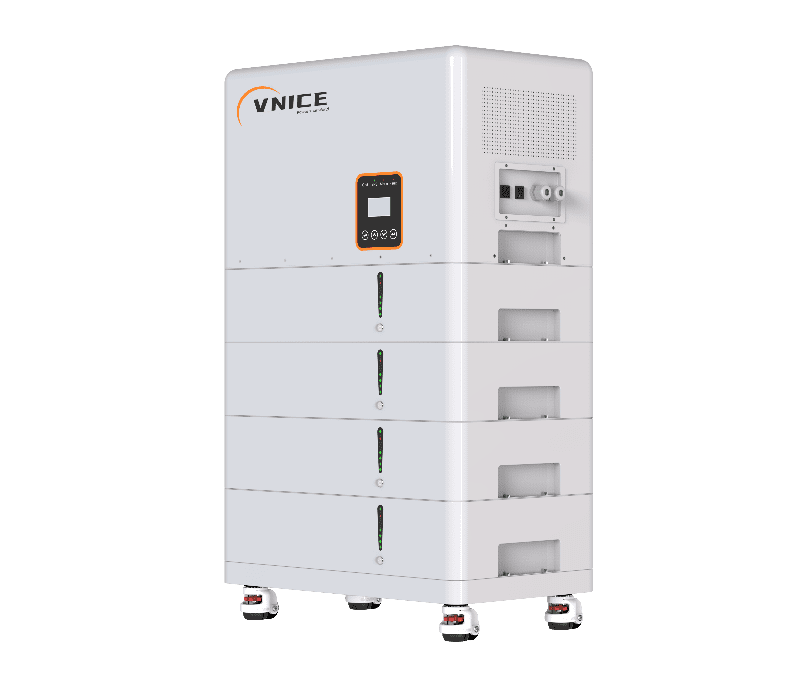
8Kw
Hybrid Inverter
20.48Kwh
Capacity
15.6Kw Max.
PV Input
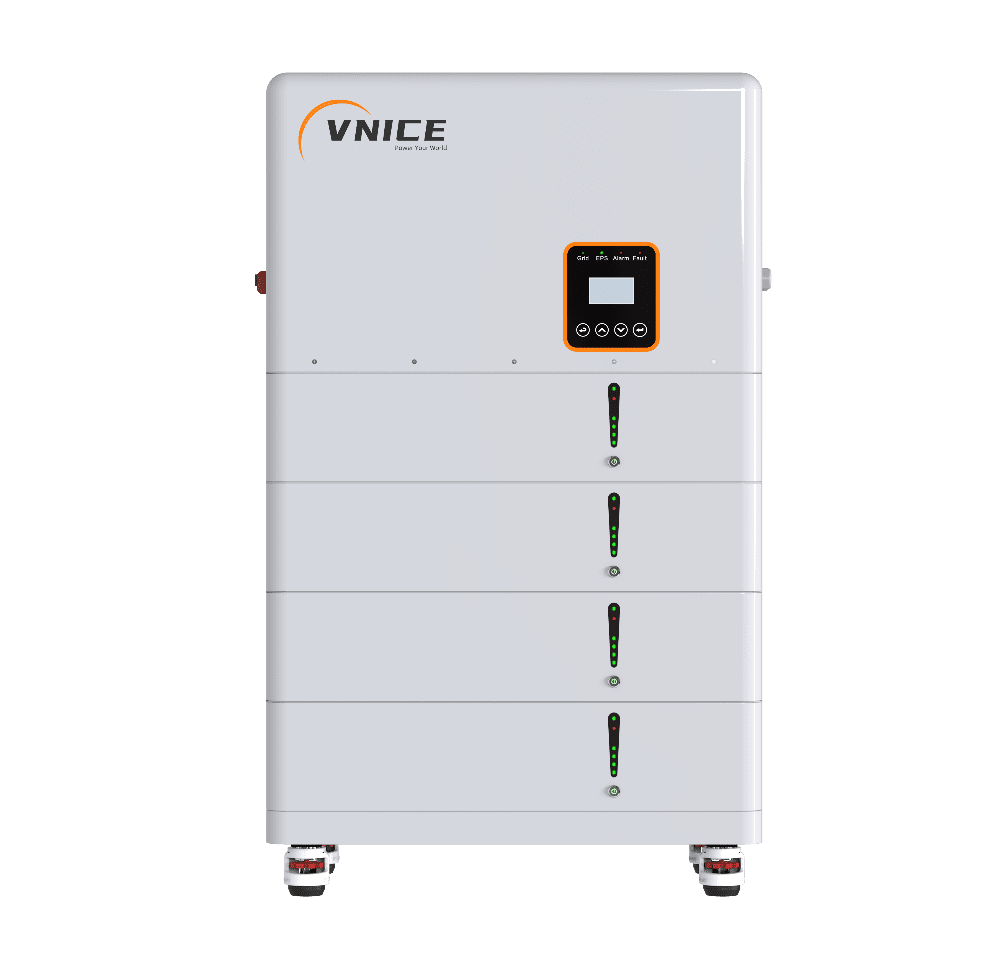
Integrated Battery + Inverter
- Support multi-machine parallel connection, Max. power can get to 20.48kWh.
- LiFePO4 cells, 5120Wh supplied by one battery module, Max. 4 units capacity is 20.48kWh.
- PV 10.4kW-15.6kW fast charging, can get 80% power within 1h.
- Easy installation, connection wires hide in the shell of battery module.
- Don’t worry about lithium batteries being incompatible with the inverters
Support sell the electricity to the grid
Support sell the electricity to the grid to increase incomes
Reduce CO2 emissions
Save up to 50% energy cost
Emergency Power During Blackout
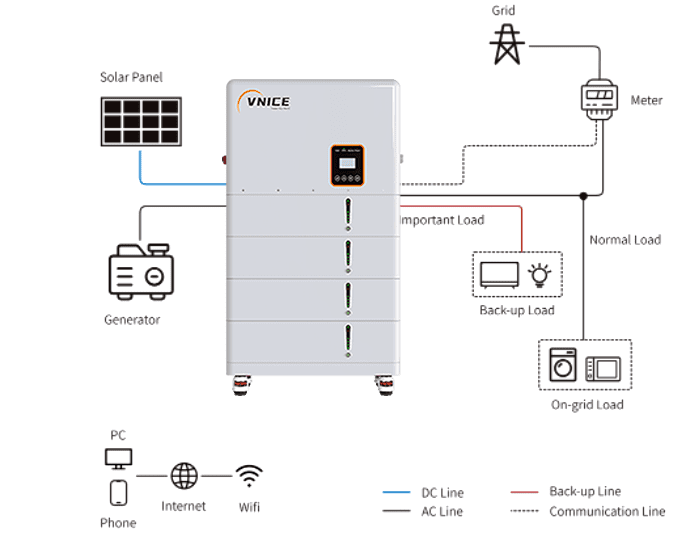
Lifecycle ≥ 6000 cycles
Longer Service Life
Through the laboratory battery cycle life test,
More than 6000 charges and discharges,
The capacity of the cell can keep above 80% of original rated
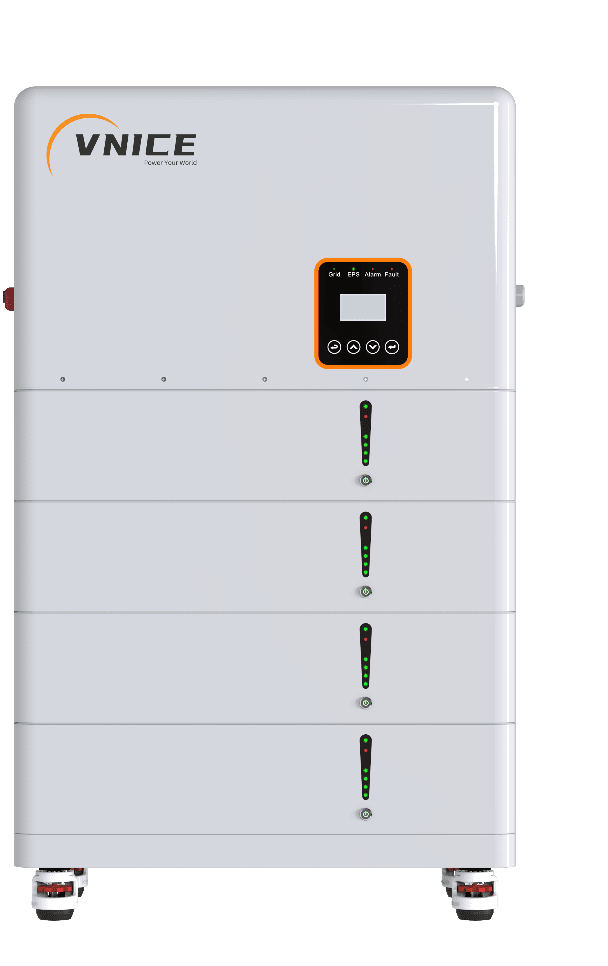
| Model | Fuoco-B8 | Fuoco-B10 | Fuoco-B12 |
| Battery Capacity | 20.48Kwh(LiFePo4) | ||
| Max. DC Input Power(PV) | 10400W | 13000W | 15600W |
| Rated PV Input Voltage | 550 (160-800)V | ||
| MPPT Voltage Range | 200-650V | ||
| PV Input Current | 13+13 | 36+13 | |
| No.of MPP Trackers | 2 | ||
| No.of Strings per MPP | 1+1 | 2+1 | |
| Rated AC Output Active Power | 8000W | 10000W | 12000W |
| Max AC Output Active Power | 8800W | 11000W | 13200W |
| AC Output Rated Current | 12.1A/11.6A | 15.2A/14.5A | 18.2A/17.4A |
| Max AC Output Current | 13.4A/12.8A | 16.7A/15.9A | 20A/19.1A |
| Max. Continuous AC Passthrough (A) | 45A | ||
| Peak Power (off grid) | 2 time of rated power, 10 S | ||
| Power Factor | 0.8 leading to 0.8 lagging | ||
| Output Frequency and Voltage | 50/60Hz; 3L/N/PE 220/380, 230/400Vac | ||
| Grid Type | Three-Phase | ||
| Total Harmonic Distortion (THD) | <3% (of nominal power) | ||
| System Size | 750*450*1200 mm | ||
| System Weight | ≈270Kg | ||
Residential
Farm
Remote Areas
Data Center
Bus Station
Small Enterprise
Application
A 20kW on grid solar system is ideal for homes, farms and medium businesses. A 20kW solar system belongs to 48V family energy storage series. This high-quality solar system provides reliable power, without any compromise on your lifestyle. Capacities of this on-grid solar system can power a house of large size or larger properties.
Is a 20kW Solar System Suitable for My Home?
A 20kW solar panel system is best suited for lager homes, or stations even
businesses with more energy-intense appliances. With the characteristics of
safety, long service life, and perfect after-sales service, our products Fuoco
Series will be the best choice for your household energy storage meeting your
higher power needs.
An on-grid residential energy storage system can also live up your expectations
of recovering the cost quickly by connecting the grid in that it allows a
combination of exporting electricity to the grid and using the power in the
home. In this case, you can not only produce energy you need but earn an extra
profit.
As a 20kW system can produce more power, it is more expensive than the smaller
ones. However, if you have higher energy requirements, it’s
often quicker to pay off the cost of installation by installing a system with a
larger capacity.
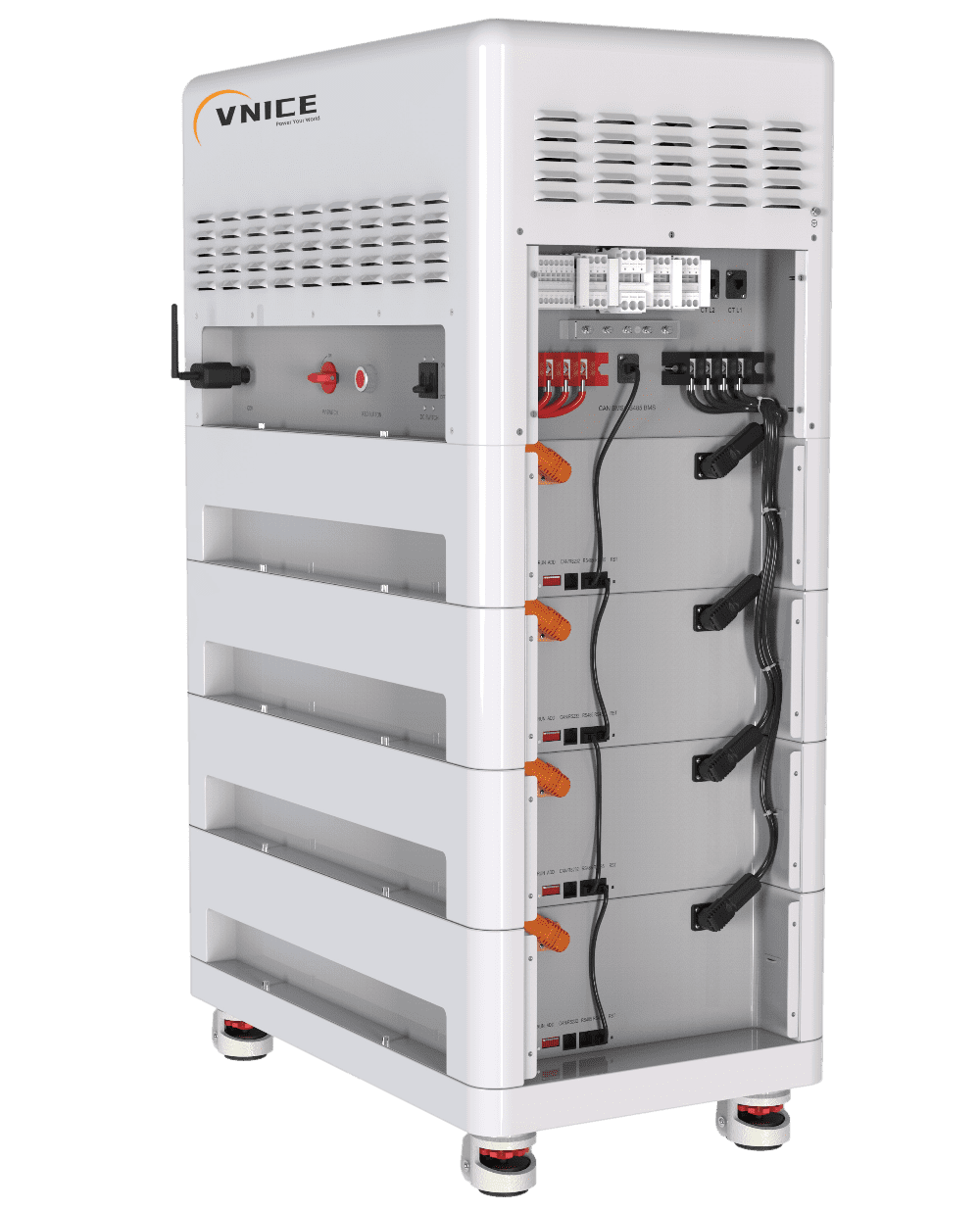
How Many Solar Panels are in a 20kW System?
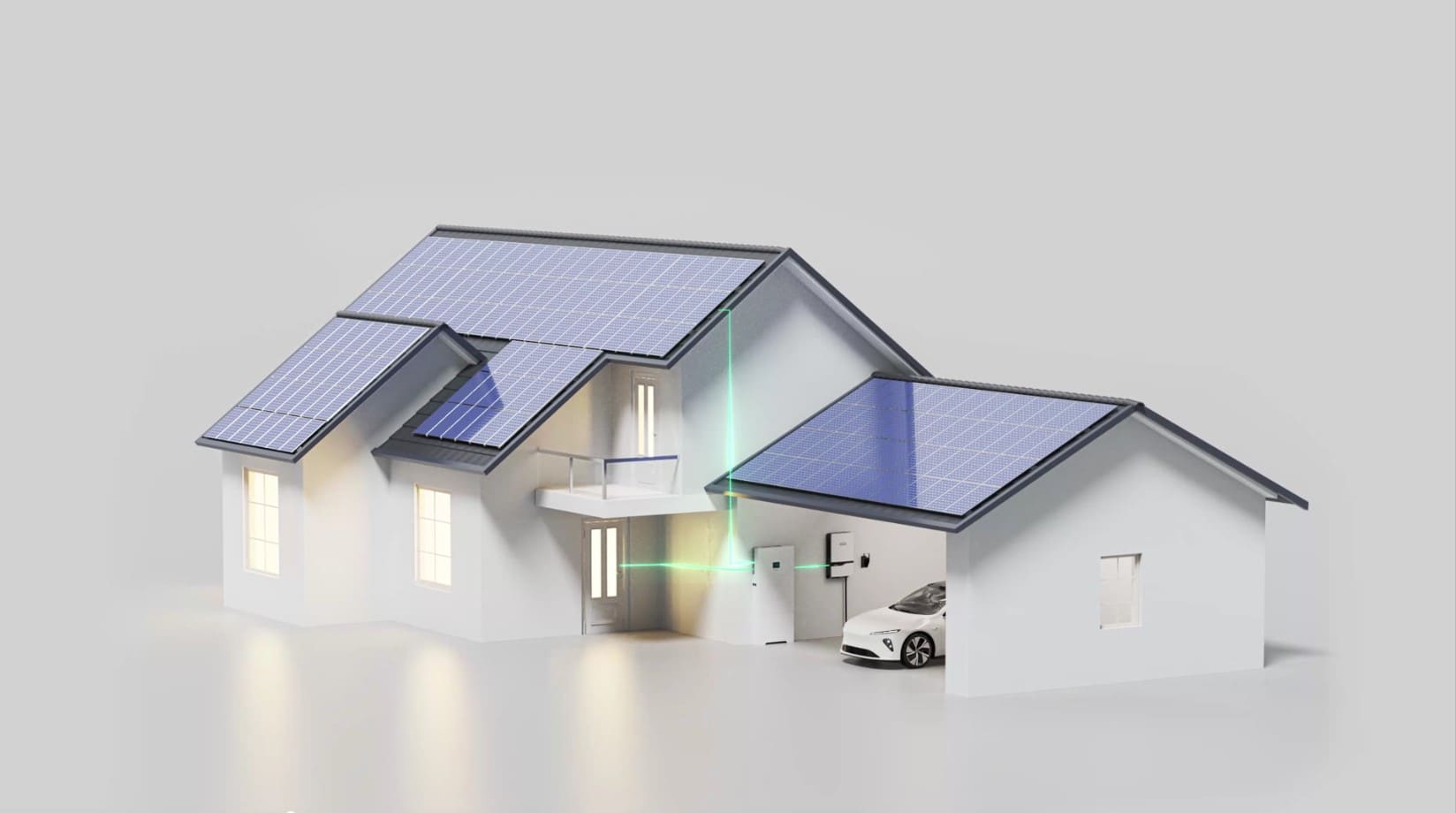
The typical solar panel is 300-450 W, so if you opt for this type of panel, you'llneed to install eight to twelve panels in total to create a 20kWsystem (20000 W) Below is a table showing how many panels you would need for a 20kW system,with varying power outputs:
| Panel Power Output | Number of Panels for a 5kW System |
| 300 | 67 |
| 350 | 58 |
| 400 | 50 |
| 450 | 45 |
FAQs: 20kw Solar Systems
With an off-grid solar system, you’re completely reliant on the sun and energy stored in batteries to power your home or business. If you decide to install an on-grid solar system, you will always have access to electricity from the utility grid whether or not your solar system is producing energy.
With an off-grid solar system, you’re completely reliant on the sun and energy stored in batteries to power your home or business.If you decide to install an on-grid solar system, you will always have access to electricity from the utility grid whether or not your solar system is producing energy.
If your system is not tied to a grid, you won’t receive an electric bill. However, off-grid systems are often more expensive because of the additional equipment like batteries needed. If you opt for a grid-tied system, you could still see delivery charges or demand charges on your electricity bill, even if your solar system provides 100% of your electricity
The short answer to this question is yes.
Installing battery storage systems with a 20kW solar system will enable you to
use more of the energy you produce.
According to reports, installing a 20 kWh battery with your 20kW system for
everyday use can boost the amount of self-generated solar power a household
consumes from 30% to 60%.
That’s a considerable increase in the amount of self-generated solar power.
But whether you should install a battery depends on your budget, energy usage,
and more.
If you plan to reduce your carbon footprint, save money or reduce your home
electricity bills, installing a battery with a 20kW system is an excellent first
step. But you should also consider the additional cost of battery installation,
your payback period, and how much you are likely to save over time.
The below table shows average solar panel of per kW costs of some countries.
| Country | Cost Per KW |
| India | $793 |
| China | $879 |
| Canada | $2,427 |
| Russia | $2,302 |
| Japan | $2,101 |
| South Africa | $1,617 |
| Australia | $1,554 |
| United States | $1,549 |
| France | $1,074 |
| Germany | $1,113 |
Therefore, the rough cost of 8 kW solar system in Germany should be —$1113*8=$8904.
Likewise, the rough cost of 8 kW solar system in France should be—$1074*8=$8592.
There are four important factors that influence the cost of solar panels.
- Wholesale equipment costs:As a young industry, factories have been able to automate processes, increase manufacturing and logistics scale and dramatically reduce the cost per watt of a solar installation.
- compensation: In order to encourage households to select solar energy, government implements intriguing policies to attract citizens to select solar energy, such as The Solar Rebates. The introduction of local solar rebate schemes in particular states has had a dramatic effect on the cost of solar
- Competition and Cheap Solar: there are thousands of contractors to install solar. As a result, the margins have been forced to be very slim in the market.
This figure depends on where you live, your cost of electricity, your feed-in
tariff, and your daily energy usage.
To determine how long it would take to pay off a system, you must calculate the
total monetary value of the energy produced by the system on an annual basis,
and divide the cost of the system by this figure.
You can do this by figuring out what the cost of power is, how much you will
export and use in the home, and what your daily savings are.
A 20kW solar system is certainly powerful enough to cater to the average
electrical needs of a 8-to-10 person household.
However, power compatibility depends on:
Utilities and home appliances that consume energy and therefore determine the
maximum power usage in your household.
Your lifestyle. If you work at home, you’ll consume power all day, unlike a job
where you can turn off the power supply until you return from work.
Electrical vehicles you own. If you have a Tesla or plan to buy one, a 20kW
solar system won’t be enough to power both the car and your household.
Your average daily energy usage during summer and winter.
Your solar system power compatibility depends on the above-listed factors and
how these align to installation in your area.
To understand if a 20kW system can power your home, you’ll divide your average
daily usage by the local peak sun hour. You can find your average daily use on
your electricity bill.
Average daily usage (kWh) / the local peak sun hour=Your recommended solar
system size. Once again this is because a system will produce the times of the
local peak sun hour its size in power per day.
If the kilowatt per hour displayed on your home electricity bill shows you
consume 35 kWh per day, and the peak sun hour is 4 hours, a 20kW solar system
will be enough. Anything higher than 20 kWh usage per day implies it won’t be
sufficient.
A few things to consider before going solar are available space, energy
needs, cost, and your overall aims for solar system installation.
A smaller system will produce less electricity than a larger system. If you’re a
two-person household with low energy consumption, a smaller 5kW system will be
plenty for daily use. If not, a system that will generate extra power is more
advisable.
The cost is also an important factor. Since larger solar systems will cost more
than smaller solar systems, payback period is affected.
Modular design;
Standardized production;
Strong commonality;
Easy installation, operation and maintenance;
Perfect BMS protection and control system for over current, over voltage,
insulation and the like;
Utilization of lithium iron phosphate cell with low internal resistance and high
rate;
High consistency of internal resistance, voltage and capacity of single cell;
A long life cycle of around 5,000 times; a service life of more than 10 years;
Fast charging and discharging support;
Visual LCD display: allows you to set operating parameters, view real-time data
and operating status, and accurately diagnose operating faults.
Communication protocol: CAN2.0 and RS485, which can be used in various
scenarios.
WE OFFER BEST IN CLASS SERVICE FOR YOUR NEEDS
86-13631354535

-

Message
